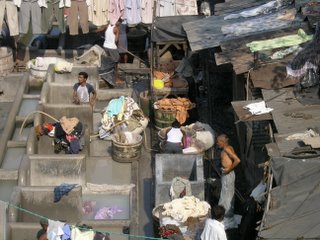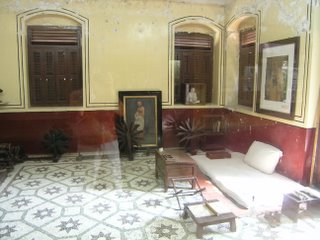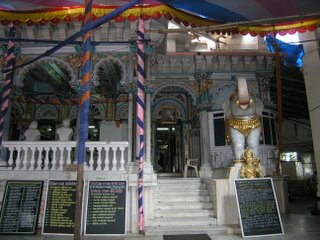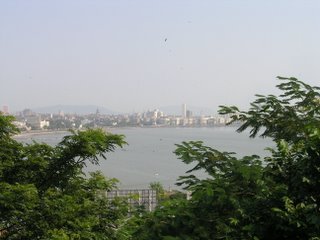 On April 14th, 2007, my dad passed away, just four days short of his 89th birthday. Even though he lived a long, full life, I feel profound sadness at having lost one of the most influential people in my life. Losing a parent is one of those defining moments that make you pause and reflect on your own life and the meaning of it. It also makes you think about the person you loved, and what you will miss the most about them. I am fortunate to have had many years of good memories with my dad, and as a tribute to him, I would like to tell you some of the things that I loved about him and that have influenced me for good in my own life.
On April 14th, 2007, my dad passed away, just four days short of his 89th birthday. Even though he lived a long, full life, I feel profound sadness at having lost one of the most influential people in my life. Losing a parent is one of those defining moments that make you pause and reflect on your own life and the meaning of it. It also makes you think about the person you loved, and what you will miss the most about them. I am fortunate to have had many years of good memories with my dad, and as a tribute to him, I would like to tell you some of the things that I loved about him and that have influenced me for good in my own life.Dad was a practical man. When something needed to be done, he just did it. He was not overly emotional or sentimental about anything, but was always ready to take care of things without a lot of fuss. He didn’t like to hang onto a lot of stuff, especially if it had no use to him. Growing up, our home was always orderly and uncluttered and everything had to be put in its place. Even the garage, where he spent many hours tinkering and fixing things was well-organized. We didn’t have a lot of extra stuff around the house, but if dad thought he could use it for something, it stayed. He always had extra bits of wood and wire and string around in case something needed fixing.
As a child growing up, it seemed that my dad could fix anything, a skill he no doubt learned growing up on the farm. If he didn’t have a part to fix something with, he would often make one himself. He was a great problem solver, especially if it required something that he could do with his hands. This talent was evident, even as he was lying in his hospice bed. The buzzer they had clipped to his bed sheet for him to use to call the nurses kept falling down and he couldn’t ever find it when he needed it. One day he remarked to me that he could fix the darn thing if only he had a bit of haywire! Dad would never think of hiring someone to do a job that he could do himself.
He was frugal. “Fix it up, wear it out, make it do or do without” could easily have been his motto. He lived within his means, rarely going into debt for anything. When we moved to our new home in Willow Park, his first priority was to pay down the mortgage as soon as possible so we wouldn’t have to be in debt. I remember him sitting me down and telling me that there wouldn’t be a lot of money left to get me a bunch of new clothes and things, not something a teenager wants to hear. Once, I noticed a really expensive car drive by and said how lucky that person was to own such a vehicle. His comment was, “he probably doesn’t own it, the bank owns it.” This philosophy of staying out of debt really inspired me and helped me get through the early years of our marriage when times were lean.
Dad had self-determination and self-discipline. His years of playing sports and his military training and management experience no doubt instilled in him these great qualities. I don’t ever remember him sleeping in past 7 o’clock in the morning, even on weekends and holidays. As a teenager, it was kind of annoying to be awakened early on a Sunday morning, when all I wanted to do was sleep in. I now recognize this as a great quality, and one that deserves emulating.
Dad was a man of the earth, and had a natural curiosity for science. He instilled in us a love of nature and the physical world. Dad could see many analogies for life in animals and nature, such as the need for children to be independent (ie: mother birds kicking their babies out of the nest, etc.) Although he didn’t have a lot of formal education, he did enjoy reading and learning about the world around him.
Dad loved music and instilled in us a love for it as well. Our stereo was the centre of the living room, and on weekends Dad could often be found listening to music; anything from opera, to Rogers & Hammerstein, to “Donald Where’s Your Trousers.” Having music in the house was a priority, and Dad enjoyed playing the clarinet with one of us accompanying him and singing songs around the piano. He also enjoyed listening to his children and grandchildren perform, and even though he didn’t say very much, you could always see the pride and joy in his eyes.
Dad was the most self-reliant person I have ever known. If I could think of one word that defined my dad, it would be “work”. Growing up on the farm during the Depression necessitated the need to work hard to make a living. To my dad, accepting the dole would be about the worst thing that anyone could do. He was never motivated by status or prestige, but just a desire to do the best job that he could in whatever he was doing. He always had a project of some kind on the go, especially around the house. Whether it be renovating, building a deck, painting, fixing a car, it seemed he was always busy working at something.
But Dad also knew how to relax and enjoy life. He enjoyed simple things. He didn’t have a lot of wants and desires and it didn’t take much to make him happy. Puttering around the house, doing a crossword puzzle, drinking a cold beer on a hot summer day or just relaxing on the patio with friends were all things that he enjoyed. He loved traveling (especially to Hawaii), golfing, dancing and socializing with friends. He was never the type of person who needed a lot of material things, but he did enjoy what he could afford.
Dad was a family man in the classic sense of the word. Like many men of his generation, he worked hard during the week to support his family, and on weekends was there to look after us kids while mom went shopping, etc. I have fond memories of the porridge and pancake breakfasts he would cook for us on Sunday mornings. He was never a man of a lot of words, but he conveyed his love to us by working hard, providing us with music and dance lessons, teaching correct principles, and delivering the odd spanking when needed. Dad took pride in the accomplishments of his children and grandchildren and enjoyed spending time with them.
My Dad was very courageous. He lived through some tough times and suffered some significant losses in his life, but I never ever heard him complain or expect sympathy from anyone because of it. Even his last days, knowing the end was near, were faced with courage and little complaint. He knew that it was his time to go and courageously resigned himself to it.
Dad never sought a lot of attention in his life, but had a quiet confidence about him. He was comfortable with himself and didn’t feel the need to prove anything to anyone. He didn’t envy anyone. He was a humble man. His last wishes were an indication of the way he lived his life. He didn’t want a funeral with a lot of pomp and circumstance but said that it would be alright if we said a few nice words.
It’s difficult to sum up a life in a few words. How can you measure the influence that a person like Dad had on those around him? Like all of us, he wasn’t perfect, but the most important thing is that Dad loved well, and he knew that we loved him. It’s that love and influence that will continue on in the lives of his family and those who knew him, and I believe, in the end, that’s all that really matters.
Goodbye Dad! I will always love you!



 Gary got this great shot of me
Gary got this great shot of me 




















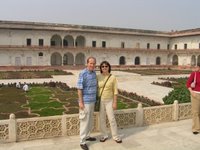

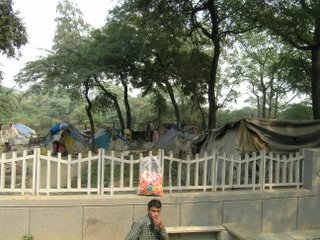

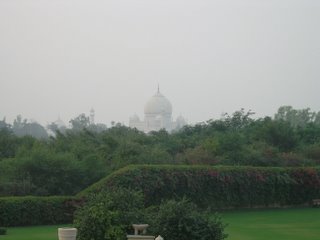 In the evening, we had a wonderful dinner with the members of our group who were left. I think there were about 10 of us. The best part was that when we opened the menus, they had something besides Indian food. Not that we didn't like the Indian food, but it is a little hard on the stomach when you have it for every meal and are not used to all the spices. We had a fun time and some great conversation.
In the evening, we had a wonderful dinner with the members of our group who were left. I think there were about 10 of us. The best part was that when we opened the menus, they had something besides Indian food. Not that we didn't like the Indian food, but it is a little hard on the stomach when you have it for every meal and are not used to all the spices. We had a fun time and some great conversation.





